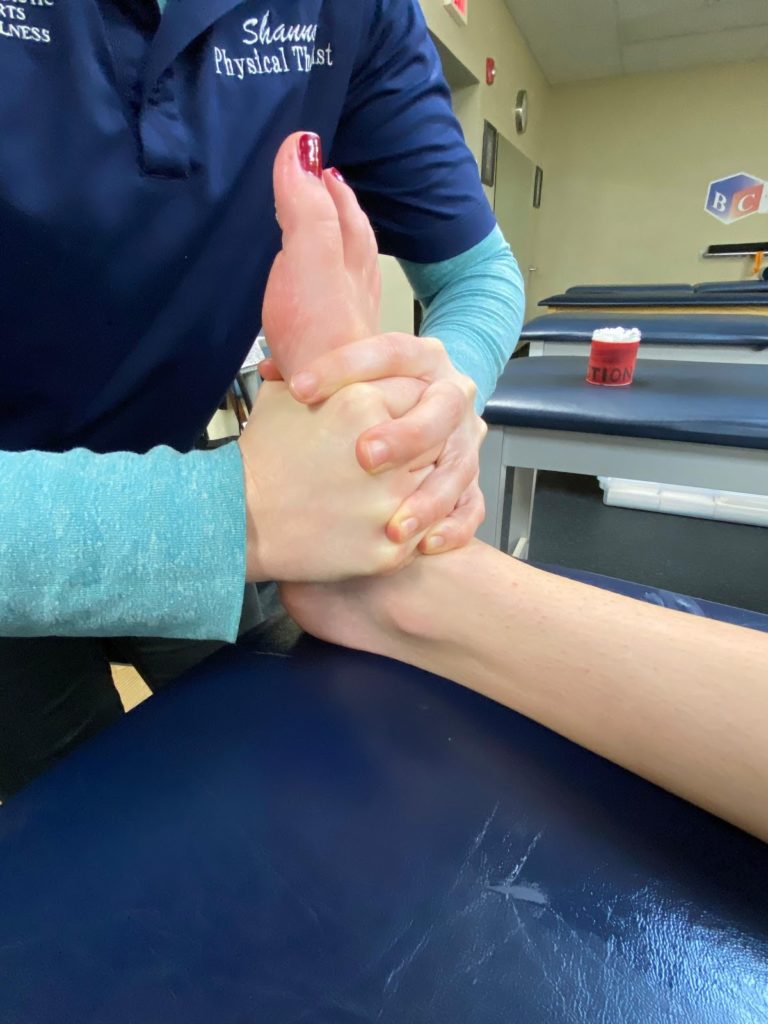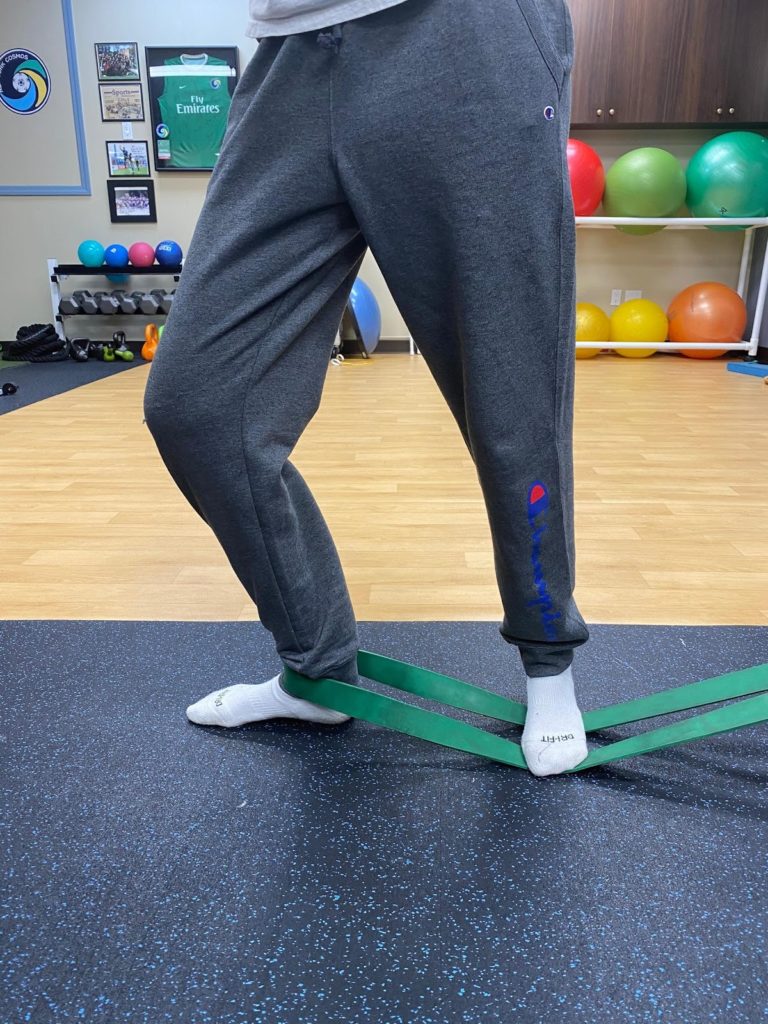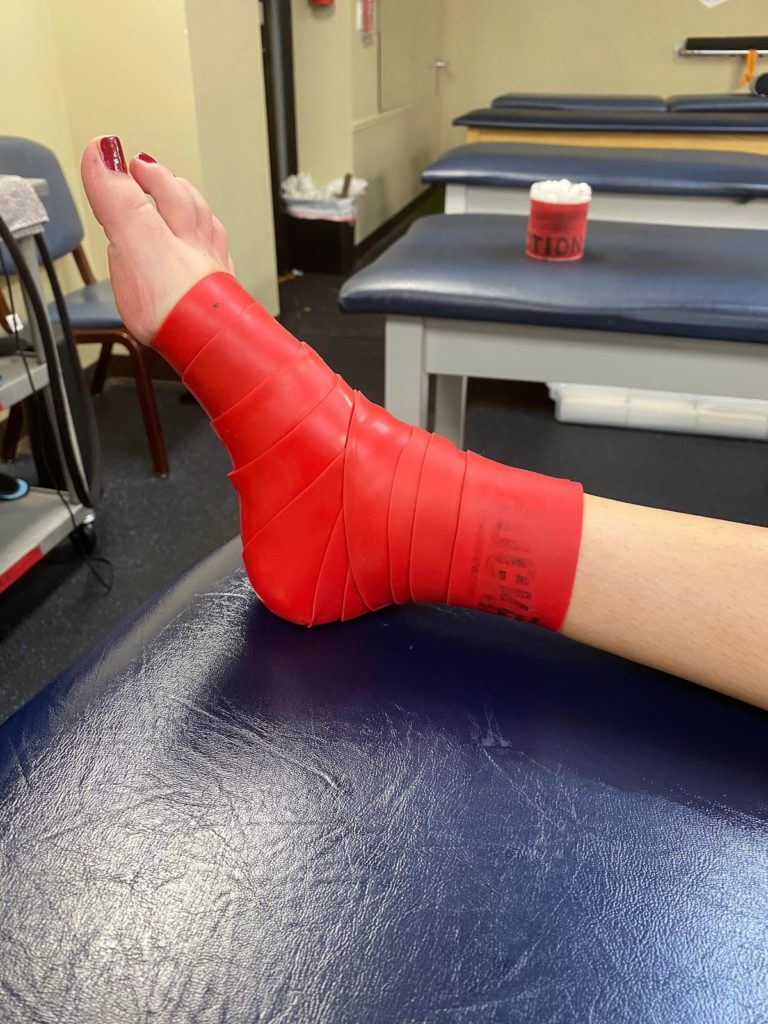Physical Therapy after Ankle Sprain
Ankle sprains are one of the most common injuries sustained during sporting events of all levels. Whether it be high school, collegiate, professional or even weekend warrior competitions, ankle sprains are all too prevalent. It is estimated that 1 in 10,000 athletes will sprain their ankle DAILY. What is more shocking is that most people tend to undermine this injury and push through it. This may seem like the heroic or “tough-guy” thing to do, however, it is a very BAD idea.
Physical therapy for a sprained ankle should begin IMMEDIATELY. Following an injury, pain, swelling, bruising and decreased proprioception (body’s position sense) occur immediately. Inflammation is initially good for proper healing, however, we do not want residual swelling to occur and remain. Additionally, chronic instability can occur with poor training of the body’s proprioceptive system. This could lead to repetitive ankle sprains, all progressively worsening, and eventual osteoarthritis of the ankle joint. Please continue reading to understand why physical therapy after an ankle sprain is so important to return-to-sport, re-injury prevention and future performance/success.
What is an ankle sprain?
An ankle sprain is the damage to ligamentous structures in the ankle – more commonly to the lateral, or outside, ligaments. But the medial, or inside, ligaments can certainly be involved as well. The most prevalent mechanism of injury is an inversion ankle sprain – meaning the foot turns in on itself and causes the “rolling” of the ankle. When this occurs, the lateral ligaments are overstretched and damage/injury occurs.
Ligaments are the primary proprioceptors of the ankle. This means that ligaments tell the brain where the ankle is in space. When these structures are damaged, the communication up to the brain is poor, leading to instability and high risk for reinjury or even a worse injury. The three main lateral ligaments in the ankle are the Anterior Talofibular Ligament (ATFL), Calcaneofibular Ligament (CFL) and Posterior Talofibular Ligament (PTFL). The ATFL is often the most involved, followed by the CFL and finally the PTFL.
There are two other types of ankle sprains that can occur as well. An eversion ankle sprain is possible, which is when the ankle rolls outward. This often occurs when an athlete is stepped on. This injury affects the deltoid ligaments (medial ligaments) more than the lateral ligaments discussed above. Finally, the third and arguably toughest sprain is to the high ankle structurs and is referred to as a high ankle sprain. The structures involved in this injury are the syndesmosis – the fibers that connect the tibia to the fibular horizontally – and the Anterior Tibiotalar Ligament. In our professional opinion and background in treating several athletes with ankle sprains, high ankle sprains take the longest to recover.
Levels of ankle sprain and prognosis:
Ankle sprains can be classified into three levels and are outlined below:
| Damage | Presentation | Prognosis | |
| Level I | Slight stretching; Some damage to fibers | Mild tenderness and swelling | Likely return to sport in 2-4 weeks. |
| Level II | Partial thickness tearrange of damage can be slight partial tear to nearly complete | Moderate tenderness and swelling/bruisingLoss of ROM and functionInstability | Likely return to sport in 6-8 weeks. |
| Level III | Complete tear of ligaments | Severe tenderness and swelling/bruisingSignificant loss of ROM and functionUnable to weight bear Severe instability | Likely return to sport in 8-12+ weeksCan even possible be up to 4-6 months. |
When and why should I begin physical therapy for an ankle sprain?
Physical therapy after an ankle sprain should begin IMMEDIATELY. As explained above, damaged ligaments decrease the stability and proprioception of the ankle. This can lead to further ankle sprains in the future, as well as decreased overall function of the ankle and lower extremity. We do believe in RICE – the common acronym for treating ankle sprains.
- Rest
- Ice
- Compression
- Elevation
However, we also believe in immediate functional and safe rehabilitation, including joint mobilizations, soft tissue massage, cross friction massage, stretching and progression through rehab program. Research highly supports this approach to ankle sprain treatment. There is too high of incidence to chronic ankle instability (75%) and recurrent lateral ankle sprain (up to 70%) in athletes. This is believed to be because of the low compliance or poor execution of rehabilitation.
Why is proprioception and ligament health so important?
We have discussed proprioception in previous blogs, but it is so important to be educated on it. Proprioception refers to the communication from the ankle (ligaments) up to the brain. The ligament receptors relay the ankle’s position to the brain. The stronger this communication is, the less likely an injury is to occur because the brain understands the ankle may be in a dangerous position and can quickly change position before damage is done.
When the ligament is not healthy or is found to have weakened proprioception, the ankle is at higher risk for an ankle sprain and ligament damage. For example, in an unstable ankle, when the ankle is going into inversion, the brain cannot change the position quickly. Therefore, the ankle continues to go into inversion and causes damage to the lateral ligaments. The longer the ligament is injured, the harder/longer it is to improve proprioception. It is important to heal and begin stressing the system immediately following an injury to prevent worsening the proprioceptive system. We cannot stress enough that physical therapy after an ankle sprain is ESSENTIAL.
What does Block Sports have to offer?
Here at Block Sports Chiropractic & Physical Therapy, we have highly skilled and experienced physical therapists who have treated several ankle sprains ranging from young athletes -> collegiate athletes -> high level athletes -> weekend warriors. We have experienced Grade I sprains and severe Grade III sprains and are confident in our rehabilitation programs for all levels. We utilize skilled manual interventions such as ankle joint mobilizations, cross friction massage to the lateral ligaments, soft tissue massage to surrounding tissues, kinesiotape for edema reduction, flossing with RockFloss, manual resistance exercises and manual proprioceptive neuromuscular feedback. We have a research-based protocol we follow with all ankle sprains, and are constantly researching new techniques, as well. Our therapeutic exercise and neuromuscular routine have successfully rehabilitated several ankle sprains with low incidence of reinjury.
If you have any questions regarding physical therapy following ankle sprain, our providers at our Smithtown, NY and Selden, NY facilities are more than happy to explain how we can assist.













